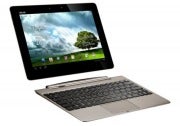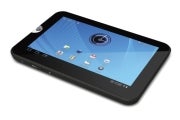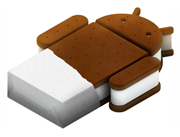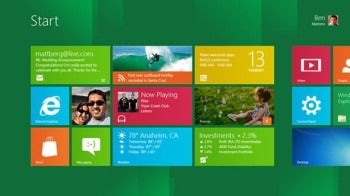As tablets move into their adolescence, what changes will we see?
What will tablets look like in the coming year? Tablets are out of their infancy and moving into adolescence--which means that we can expect big changes ahead as tablets' design and components improve.
Tablet operating systems will see some new blood, too, with the
introduction of Android 4.0 and Windows 8. How will these changes
manifest? Let's start with design.
Lighter and Thinner Tablets
Next year you can expect tablets to become even lighter and thinner than
they are now. Actually, the shift has already begun: For 10-inch-class
tablets, 1.2 to 1.3 pounds is shaking out as the new normal weight (down
from 1.5 to 1.6 pounds as the norm in 2011), and 0.3 to 0.4 inch is
becoming the new standard in thickness (down from 0.5 inch).
And those numbers should edge lower still, especially after Android
manufacturers see what design leader Apple has in store for its iPad 3,
which is widely expected to appear sometime in the first quarter of
2012.
Now that the rush to get a first tablet to market is past, manufacturers
will likely turn their attention to the nitty-gritty details--display
quality, text rendering, speakers, infrared ports for using a tablet as a
remote control--as they try to get right in 2012 what they fumbled on
during their first time out. We'll continue to see a wide array of
screen sizes--from 7 inches to 10.1 inches--simply because consumers
haven't yet shown enough of a preference to eliminate some of the middle
sizes.
 Additionally, we'll continue to see prices push down, thanks in part to models like the Amazon Kindle Fire--a
7-inch tablet that sells for $199, which is just a few dollars below
Amazon's cost. Nvidia's CEO reportedly expects that prices for tablets
using Nvidia's Tegra 3 system on a chip will drop to $299 by mid-2012.
Additionally, we'll continue to see prices push down, thanks in part to models like the Amazon Kindle Fire--a
7-inch tablet that sells for $199, which is just a few dollars below
Amazon's cost. Nvidia's CEO reportedly expects that prices for tablets
using Nvidia's Tegra 3 system on a chip will drop to $299 by mid-2012.
Quad-Core Chips
Nvidia launched the Tegra 3 platform
in November. Previously known as "Project Kal-El," the Tegra 3 packs in
a quad-core ARM Cortex A9 CPU, a fifth "low-power" core for handling
secondary tasks (such as playing music), and a 12-core GeForce GPU for
graphics-intensive rendering. With quad-core chips, tablets should
become more-capable performers that compete better with laptops than
they do today.
 The Asus Transformer Prime
seems poised to be the first tablet to market to include Tegra 3. The
Transformer Prime is a slimmer and redesigned version of the first-gen Eee Pad Transformer. The Prime is due to ship in December with an expected price of $500 for a model with 32GB of storage.
The Asus Transformer Prime
seems poised to be the first tablet to market to include Tegra 3. The
Transformer Prime is a slimmer and redesigned version of the first-gen Eee Pad Transformer. The Prime is due to ship in December with an expected price of $500 for a model with 32GB of storage.
Nvidia may have an early monopoly on the quad-core chip market for tablets. Qualcomm announced that its quad-core Snapdragon chips
for tablets won't be out until its Snapdragon S4 line appears in the
second half of next year. Qualcomm has already spoken of its chips being
used for Windows 8 tablets. Meanwhile, Freescale and Texas Instruments have both said that they also will have quad-core ARM chips in 2012.
We expect to hear about more tablets using quad-core chips--from Nvidia
and other manufacturers--during the 2012 International CES trade show in
January.
Higher-Resolution Displays
 While the 1024-by-768-pixel iPad 2 offers only 132 pixels per inch, the upcoming Toshiba Thrive 7" tablet will arrive with a 1280-by-800-pixel display that boasts 225 pixels per inch, the same as on the already-shipping T-Mobile SpringBoard. (Due in December, the Thrive 7" is the smaller cousin of the 10.1-inch Thrive.)
While the 1024-by-768-pixel iPad 2 offers only 132 pixels per inch, the upcoming Toshiba Thrive 7" tablet will arrive with a 1280-by-800-pixel display that boasts 225 pixels per inch, the same as on the already-shipping T-Mobile SpringBoard. (Due in December, the Thrive 7" is the smaller cousin of the 10.1-inch Thrive.)
The extra pixels are important, as they help smooth out the text so that
you don’t see the dots that form the letters. Rumors are running
rampant that a high-resolution display, akin to but perhaps not quite as high as the one in the iPhone 4S, will be in the next version of the iPad.
It's All About the Operating System
 Tablet
operating systems will evolve in a big way in 2012. Already, we know
that Android 4.0--code-named Ice Cream Sandwich--is the mobile operating
system that Google is touting as the great unifier between the
divergent Android 2.x phone and 3.x tablet platforms.
Tablet
operating systems will evolve in a big way in 2012. Already, we know
that Android 4.0--code-named Ice Cream Sandwich--is the mobile operating
system that Google is touting as the great unifier between the
divergent Android 2.x phone and 3.x tablet platforms.
Asus says it will offer a downloadable firmware upgrade for the
Transformer Prime, to replace its shipping Android 3.2 OS with Ice Cream
Sandwich. But that update won't be available until the beginning of
2012. In the meantime, you can get a glimpse of the new OS via Nvidia's video of Ice Cream Sandwich on the Transformer Prime.
The actual benefits and implications of Ice Cream Sandwich for tablets
remain fuzzy, however, since no tablet has shipped with Android 4.0 yet.
In addition to new tablets carrying Ice Cream Sandwich, some
manufacturers have indicated that certain already-released Android
tablets will get an update to the new OS, but details remain vague.
Windows 8 Tablets
Android isn't the only news on the tablet-OS front for next year.
Microsoft's big coming-out party for Windows 8 is scheduled for 2012,
and Windows 8 is bound for tablets in a big way.
Today, several companies offer Windows 7 slates, including Dell, ExoPC,
Fujitsu, Hewlett-Packard, Motion Computing, Samsung, and ViewSonic. With
prices starting at $650 and running to nearly twice that, however,
manufacturers typically position these tablets for use in the business
world, where the Windows operating system reigns supreme, and where
buyers tend to have custom software already designed for the OS.
Windows tablets have remained a niche item so far due to their
comparatively higher prices, shorter battery life, and lack of a
touch-optimized operating system and apps, but that situation should
change with Windows 8.
 Windows 8 Metro-style interfaceThe Windows 8 interface, filled with big "Metro-style"
tiles, is optimized for touch navigation. And, in contrast to the
current Windows 7 tablet models, which run on Intel Atom CPUs, Windows 8 will be able to run on ARM chips.
Windows 8 Metro-style interfaceThe Windows 8 interface, filled with big "Metro-style"
tiles, is optimized for touch navigation. And, in contrast to the
current Windows 7 tablet models, which run on Intel Atom CPUs, Windows 8 will be able to run on ARM chips.
When it comes to complete end-to-end compatibility for data, apps, and
peripherals, nothing compares to what a Windows device can offer. That’s
a significant advantage over Android and iOS that Windows tablets
should be able to exploit.
Tablets running Windows 8 could address the twin troubles of file handling and app compatibility across devices, since you will be able to run the same software on a tablet as you will on a Metro-capable PC.
Tablets running Windows 8 could address the twin troubles of file handling and app compatibility across devices, since you will be able to run the same software on a tablet as you will on a Metro-capable PC.
We still don't have a ship date for Windows 8, but we've heard rumblings
about tablets running the OS coming as soon as summer 2012 (Nokia's
head of French operations has alluded to that date). At the very least,
Windows 8 tablets with less-expensive ARM CPUs are sure to shake up the
tablet status quo.
Apple Tablets
 Finally,
with Apple having just released iOS 5.0, we don't expect a lot of
innovation or announcements surrounding the iOS operating system and how
it plays with the iPad 3. Those announcements will likely stay under
wraps until closer to midyear, when Apple holds its Worldwide Developers
Conference (the date has not yet been set, but it is rumored to be in
June). Along the same lines, news of the rumored next Android OS,
code-named Jelly Bean, will have to wait for confirmation at the Google
I/O conference in April.
Finally,
with Apple having just released iOS 5.0, we don't expect a lot of
innovation or announcements surrounding the iOS operating system and how
it plays with the iPad 3. Those announcements will likely stay under
wraps until closer to midyear, when Apple holds its Worldwide Developers
Conference (the date has not yet been set, but it is rumored to be in
June). Along the same lines, news of the rumored next Android OS,
code-named Jelly Bean, will have to wait for confirmation at the Google
I/O conference in April. 





0 comments:
Post a Comment